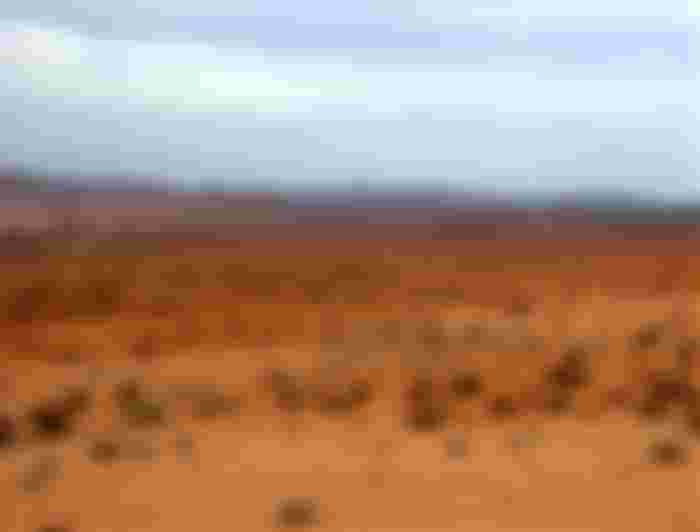Adaptation is defined in biology as the processes by which organisms become adapted to live in their environments, and it should be noted that most definitions of adaptation indicate that it occurs as a result of natural selection or natural selection responsible For the development of adaptive traits and features, based on genetic variation within a series of generations of organisms, and that adaptation is a common feature of all living things; Because it introduces some enhanced functions, so understanding the adaptive processes of living things requires an understanding of their evolution by natural selection.
Adaptation includes two basic processes, namely: the adaptation of living organisms to their environments, and the production of distinct characteristics that are well suited to the environments in which they live, as living organisms adapt to their environments in a variety of ways including their physical, physiological, and genetic makeup, modes of movement, and reproduction, besides Means of defending themselves and attacking their enemies.

Adaptation of living things to the environment
Living organisms live in different ecosystems that form their natural habitats, as each organism has its ecosystem in which it lives and provides it with basic needs of water, food, and shelter to protect it from climatic conditions, and a place for marriage and raising its young, and adaptation plays an important and vital role In the life of a living organism, where the need for all living organisms to adapt to their environments to survive, and each group of plants and animals have adaptations of their own, so this matter makes identifying the group to which the organism belongs easy, for example, Animals are divided into five main groups: fish, amphibians, reptiles, birds, and mammals, and any animal group can be determined depending on the special adaptation of the way it moves from one place to another.

Adaptation includes physical and behavioral characteristics, and physical adaptation refers to any kind of structural and structural modifications of a part of the body of an organism, including the adaptation of body parts and body coverings, while behavioral adaptation refers to any action performed by the organism in response to some external stimuli, and is represented by what the organism deals with From food how it moves, and the means of protecting itself so that the behaviors are divided into innate behaviors, and the behaviors acquired, and the behaviors acquired include any behavior that the organism learns from its parents, or through its interaction with its environment, for example, the bird learns Tweeting by listening to other birds. As for the behaviors that the organism is born and does naturally, it is called instincts. An example of this is that spiders are born and can spin their nets by themselves without anyone teaching them.

Examples of adaptations of living things to the environment
Adaptation of animals Animals have many physical and behavioral adaptations, and here are several examples:
Behavioral conditioning :
The following is a group of behavioral adaptations in a group of animals:
Canadian goose migrates in winter; To search for food all year long.
The squirrel gathers and stores food for the winter.
Opossums pretend to be dead; To confuse and confuse predators.
The marmot, or Woodchucks, hibernates throughout the winter.
A leaf insect wobbles as it moves and moves until it looks like leaves blowing in the wind.
The skunk raises its tail and spreads the poison; To protect himself from the enemies.
It determines the koala bear regions and its territory by scratching on trees.
Zebras live in flocks; To make it easier for them to spot the predators.
Pelicans help each other by swimming together in flocks and their wings striking the surface of the water; To push the fish into shallow water.
Armadillos roll themselves into a ball; To protect the limbs and lower sides while in motion.
On the continent of Antarctica or Antarctica, penguins congregate in groups; To share the warmth of each other in the winter season.

Physical conditioning :
The following is a collection of some physical adaptations in animals:
Many terrestrial and aquatic animals alike have sharp claws that enable them to do different purposes, as they are used by herbivores.
To search for food such as berries, roots, and herbs, as well as use them for digging and building dwellings, while carnivores use them.
To kill their prey and tear the flesh, in addition to using them to run very quickly, as is the case with a leopard, for example, in addition to that the animals use them to defend themselves, as they are a sufficient warning to predators or competitors, and examples of animals that have sharp claws are bears and felines, and from aquatic animals a lion The California Sea.
Many aquatic animals have webbed feet that help them swim, through which they can push themselves into the water easily, and they also enable them to catch their prey and escape from enemies; Being able to swim faster, and enable them to swim long distances and conserve their energy while swimming, and examples of animals that have membranous feet are some types of penguins called (Rockhopper Penguin), and polar bears and otter have somewhat membrane feet.
Large and sharp beaks are an advantage for carnivores and herbivores to obtain their food, for example, the large beak helps the Macaw - one of the parrot species - to open the large nuts and reach the flesh inside them, while the large beak of the rhinoceros helps (in English: Rhinoceros Hornbill) for shredding the flesh it collects from dead animal flesh.

Adaptive body cap
Body cover is an important adaptation for animals, and below are a set of examples of body cover adaptations and their importance to them:
A striped fur is a form of adaptation for camouflage, as it helps most animals integrate into their environments by matching them to their surroundings, which makes them invisible, and thus provides animals with many benefits, the most important of which is escaping from enemies or infiltrating to catch prey.
Birds in tropical rain forests are distinguished by their possession of colorful feathers, which help them in a variety of ways, including self-defense, camouflage, and mating.
For example, a male peacock uses its colored feathers to bring females for marriage, while females use it to hide while guarding their nests and protecting their young.
The presence of scales is important to many animals, such as Anaconda.
To protect their bodies from the varied terrain that they may walk on, in addition to protecting from some harsh weather conditions such as drought, as they help reduce their loss of water.

Adaptation of plants
Many plants adapt to their environments, and the following is a group of these adaptations:
Plants of tropical forests:
Adaptations for tropical plants include having broad leaves that help them drop water onto the forest floor in the form of drops, as tropical forests receive amounts of rain ranging from 200-254 cm annually, and some plants have a fatty waterproof cover; To get rid of it, in addition to that, the thick leaves of some plants help to absorb the largest possible amount of sunlight. Because tropical plants live in shaded areas resulting from the intertwining and extension of leaves and trees that prevent sunlight from reaching them, in addition to that the leaf stalk (in English: stalk) in tropical forests trees moves with the direction of the movement of the sun; To make the most of the sun's rays.

Desert plants:
Adaptations for desert plants and flowers consist of dropping leaves and petals when there is little water; To avoid water loss due to evaporation processes through the leaf pores, also, desert flowers are characterized by a short flowering reproductive cycle; To be able to benefit from the little rain, besides, the flower changes its shape after the process of fertilization; To push pollinators and pollen grains into unfertilized flowers.

Factors affecting adaptation to the environment
Living organisms are highly adapted to their environment so that they can easily predict and deal with them even when changing occurs regularly as long as these changes are not harmful, but adaptation becomes more difficult in environments that change in unexpected ways, so adaptation in turbulent environments is impossible.
As living organisms develop their qualities in inactive stages of their life in preparation for unfavorable and unpredictable conditions, which enables them to maintain their survival and existence, and an example of this is the brine shrimp eggs fighting to survive for years Long in the salty crust of lakes desert, but when rainwater falls in these lakes - which is rare - the eggs hatch and the shrimp grow very quickly, and in turn produce a lot of eggs, in addition to that, some plant seeds known for several centuries are still able to live and produce in new environments.

Adaptation is affected by the ability of the organism to perpetuate itself and the survival of its kind through its ability to reproduce, and reproduction is affected by several factors, including the organism is married or unmarried, or its arrangement within the hierarchy of its kind, and reproduction is affected by all the multiple connections between the types of living organisms, especially The community within which it is located, and all species of living organisms must follow and adapt to environmental developments and changes; Because the process of natural selection favors predators and parasites, so prey and host organisms that can resist parasite infections resort to escape, which improves their ability to reproduce, thus ensuring the continuation of the arms race indefinitely.
Moreover, adaptation represents traits and physiological and behavioral features based on genes, as some traits are not adaptable but are remnants of traits that were adaptable, while it is possible that many adaptive traits existed before and then disappeared, and are now chosen as a new basis under the circumstances New environmental.

Advantages of adapting to the environment
Adaptation offers living organisms many advantages and benefits, including Leads to the production of new individuals unique carrying some of the characteristics and features of adoptive parents, as all types of organisms that reproduce sexually inherit their children in which DNA of the parents, an example of the ability of some people to bend their tongues in the form of a cylinder when getting them a certain gene From parenting, and some people's inability to do so.
Adaptation in an organism comes in the form of a specific function, for example, the adaptation of the shoulder joint of a chimpanzee; To enable him to swing on tree branches. Adaptation increases the ability to live organisms to reproduce and reproduce, for example, the eyes of male stalk-eyed flies have reached so far from the front of their head that they are no longer able to see their destination. The presence of this trait for mating, which preserves this trait in the DNA of the new individuals' lineage. Adaptation enables living organisms to perform a current function instead of performing a previous function.

For example, the adaptation of feathers in birds had its function to adapt to temperatures, in what later became its function to fly.










